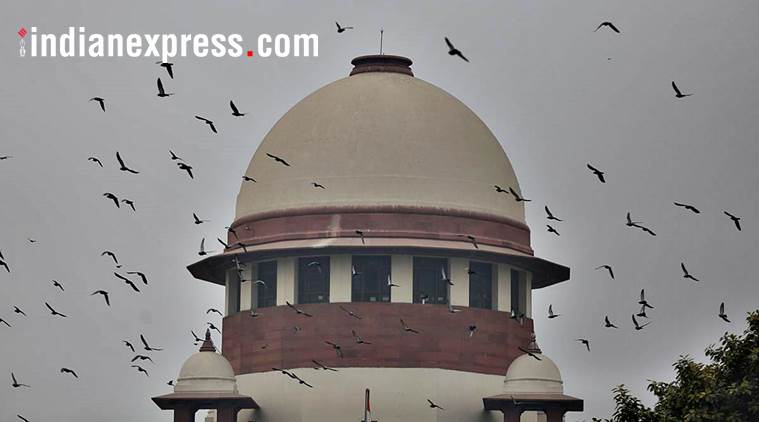 Three of the judges on the Bench — Justices Jasti Chelameswar, Madan B Lokur, and Kurian Joseph — are currently a part of the Supreme Court Collegium.
Three of the judges on the Bench — Justices Jasti Chelameswar, Madan B Lokur, and Kurian Joseph — are currently a part of the Supreme Court Collegium.
The Supreme Court Collegium and the Centre are at loggerheads over the appointment of Uttarakhand High Court Chief Justice K M Joseph as a judge in the apex court. The Union Law Ministry, while returning the recommendation for reconsideration, asked the Collegium to take into account regional representation as well as other parameters laid down in the Second (1993) and Third Judges (1998) Cases.
A similar confrontation was witnessed when the five-judge Constitution Bench of the apex court struck down the 99th Amendment and National Judicial Appointments Commission (NJAC) Act in 2015. Three of the judges on the Bench — Justices Jasti Chelameswar, Madan B Lokur, and Kurian Joseph — are currently a part of the Supreme Court Collegium. While hearing the NJAC case, the Bench had indirectly looked into issues that are at the heart of the current crisis — regional representation, seniority of judges, and interference of the executive in the appointments process.

Read | Regional faces: Government & Supreme Court once took opposite sides
Raising the issue of regional representation in the hearing, senior advocate Arvind Datar had contended that “while recommending names for appointment of a Judge to the Supreme Court, seniority in the cadre of Judges, was liable to be taken into consideration, in addition to ability and merit”.
He submitted that the first provision of Section 5(2) of the NJAC Act — recommendations to be made “on the basis of ability, merit and any other criteria of suitability as may be specified by regulations” — breached “the ‘federal structure’ of governance, which undoubtedly required regional representation in the Supreme Court”. Datar argued that “since ‘federal structure’ contemplated in the Constitution was also one of the ‘basic structures’… of the Constitution, the same could not have been overlooked”.
Read | Supreme Court Collegium meets but defers decision on Justice Joseph’s elevation
Former CJI J S Khehar, who was heading the Bench, pointed out that “consideration of Judges on the basis of their seniority…, would adversely affect the present convention of ensuring representation from as many State High Courts, as is possible”.
Story continues below this ad
He said “that Judges to every High Court are appointed in batches… A group of Judges appointed to one High Court, will be separated from the lot of Judges appointed to another High Court, by just a few days…, and sometimes… a few months. In the all India seniority of Judges, the complete batch appointed on the same day, to one High Court, will be placed in a running serial order (in seniority) above the other Judges appointed to another High Court, just after a few days… or months. Judges appointed later, will have to be placed en masse below the earlier batch… If appointment…, is to be made on the basis of seniority… then the earlier batch would have priority in the matter of elevation….”
Justice Madan B Lokur put in perspective the impasse that is created when the executive rejects a unanimous reiteration by the Collegium.
Justice Lokur said in the judgment, “The independence of the judiciary begins with the appointment of a judge… there is a great obligation and responsibility on all constitutional functionaries, including the Chief Justice of India and the President, to ensure that not only are deserving persons appointed as judges, but that deserving persons are not denied appointment.”
The answer to such an impasse, Justice Lokur noted, “is to be found in Shamsher Singh and reiterated in Sankalchand Sheth”. It was held in Shamsher Singh that in such an event, the decision of the executive is open to judicial scrutiny. The top court had also said, “In all conceivable cases consultation with that highest dignitary of Indian justice will and should be accepted by the Government… and the Court will… examine if any other extraneous, circumstances have entered into the verdict of the Minister, if he departs from the counsel given by the Chief Justice of India….”

 Three of the judges on the Bench — Justices Jasti Chelameswar, Madan B Lokur, and Kurian Joseph — are currently a part of the Supreme Court Collegium.
Three of the judges on the Bench — Justices Jasti Chelameswar, Madan B Lokur, and Kurian Joseph — are currently a part of the Supreme Court Collegium.





































